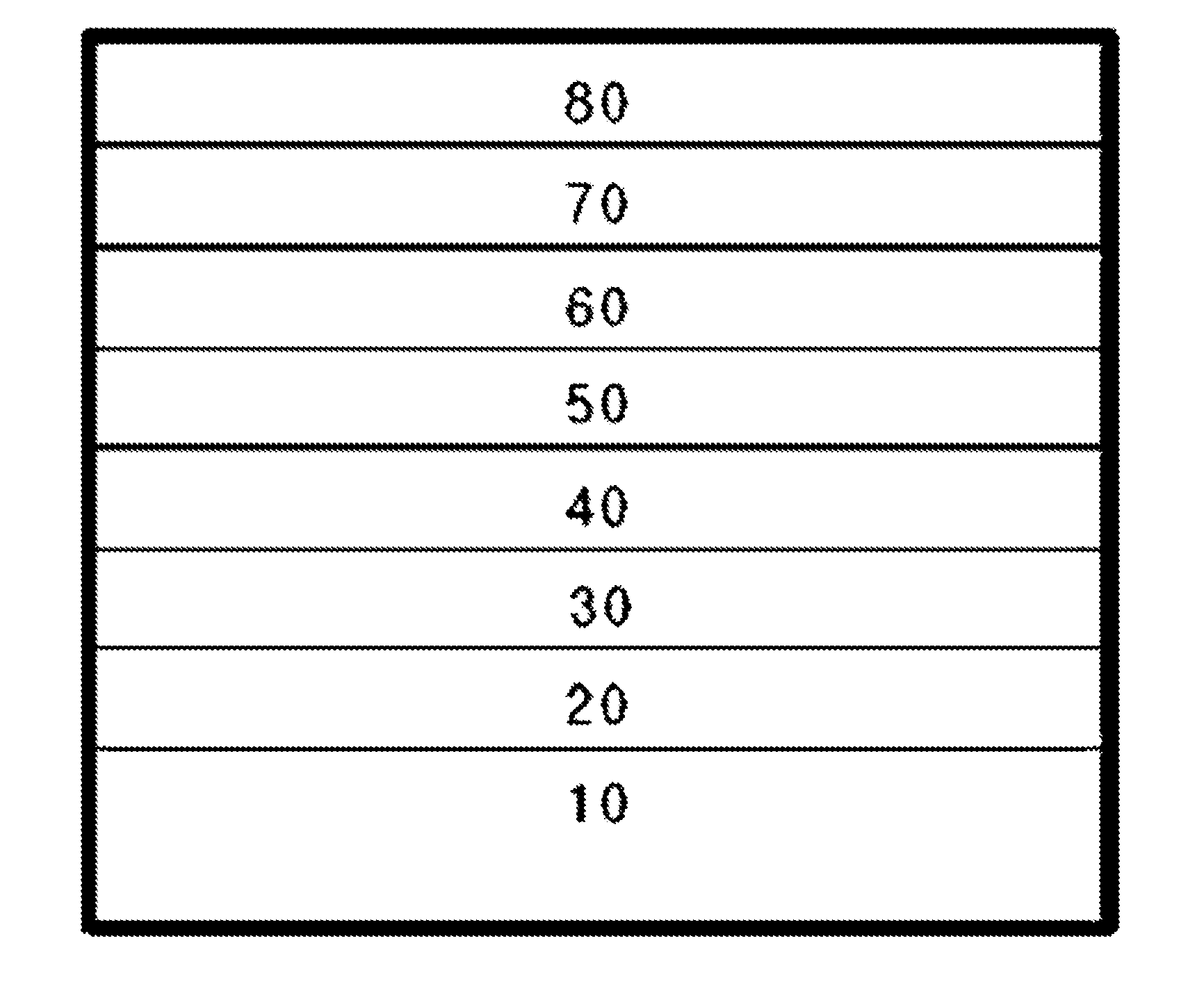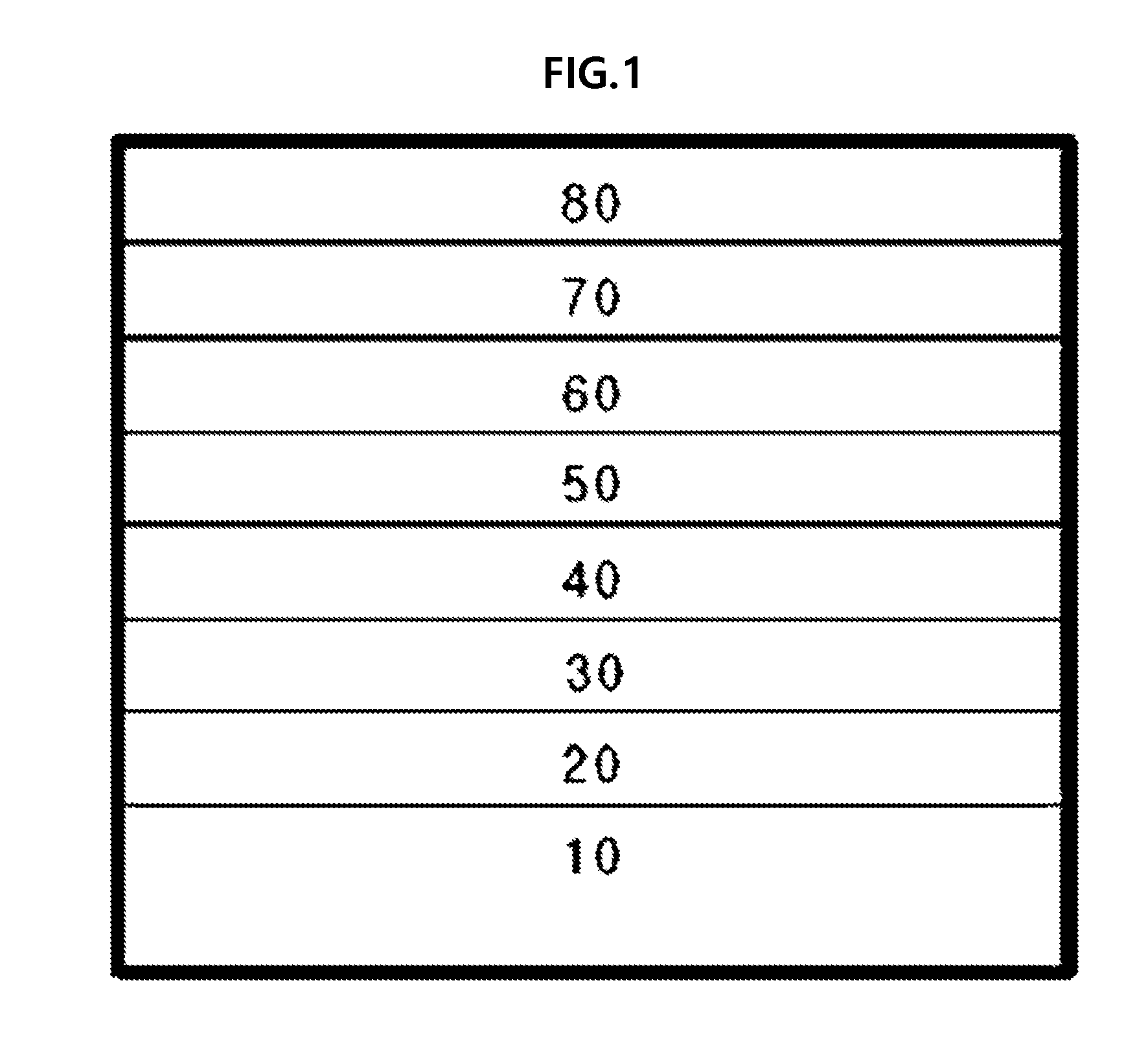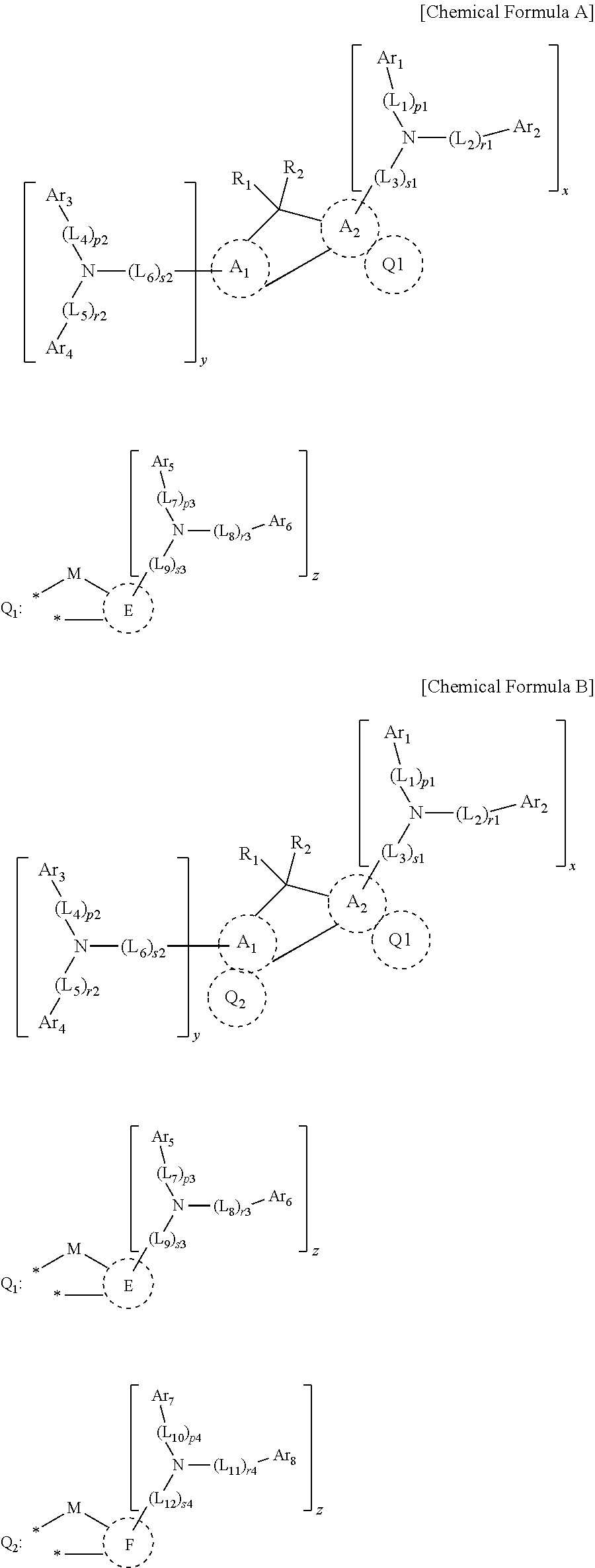Heterocyclic compound comprising aromatic amine group and organic light-emitting diode including the same
a technology of organic light-emitting diodes and aromatic amine groups, which is applied in the field of heterocyclic compounds, can solve the problems of color purity and light emission efficiency reduction, and achieve the effects of excellent luminance, light emission efficiency and longevity
- Summary
- Abstract
- Description
- Claims
- Application Information
AI Technical Summary
Benefits of technology
Problems solved by technology
Method used
Image
Examples
synthesis example 1
(1): Synthesis of [Intermediate 1-a]
[0128][Intermediate 1-a] was synthesized as illustrated in the following Reaction Scheme 1.
[0129]In a 500-mL round-bottom flask reactor, methyl 5-bromo-2-iodobenzoate (25.0 g, 73 mmol), 4-dibenzofuran boronic acid (18.7 g, 88 mmol), tetrakis (triphenylphosphine)palladium (1.7 g, 0.15 mmol), and potassium carbonate (20.2 g, 146.7 mmol) were stirred together with toluene (125 mL), tetrahydrofuran (125 mL), and water (50 mL) for 10 hrs at 80° C. After completion of the reaction, the reaction mixture was cooled to room temperature and extracted with ethyl acetate. The organic layer thus formed was separated, concentrated in a vacuum, and purified by column chromatography to afford . (75.0 g, 60.1%).
Synthesis Example 1-(2)
Synthesis of Intermediate 1-b
[0130]Intermediate 1-b was synthesized as illustrated in the following Reaction Scheme 2:
[0131]In a 500-mL round-bottom flask reactor, (17.0 g, 45 mmol), sodium hydroxide (2.14 g, 54 mmol) and ethanol (170...
synthesis example 1-(
7)
Synthesis of Compound of Chemical Formula 1
[0141]The compound of Chemical Formula 1 was synthesized as illustrated in the following Reaction Scheme 7:
[0142]In a 250-ml round-bottom flask reactor, a mixture of (5.0 g, 0.009 mol), bis(4-tert-butylphenyl)amine (6.0 g, 0.021 mol), palladium (II) acetate (0.08 g, 0.4 mmol), sodium tert-butoxide (3.4 g, 0.035 mol), tri-tert-butyl phosphine (0.07 g, 0.4 mmol), and toluene (60 ml) was stirred for 2 hrs under reflux. After completion of the reaction, the reaction mixture was cooled to room temperature and then extracted with dichloromethane and water. The organic layer thus formed was separated, dried over magnesium sulfate, and concentrated in a vacuum. The concentrate was purified by column chromatography and recrystallized in dichloromethane and acetone to yield the compound of Chemical Formula 1 as a solid (3.1 g, 38%).
[0143]MS (MALDI-TOF): m / z 964.5 [M+]
synthesis example 2
Synthesis of Compound of Chemical Formula 33
Synthesis Example 2-(1)
Synthesis of Intermediate 2-a
[0144]Intermediate 2-a was synthesized as illustrated in the following Reaction Scheme 8:
[0145]In a 2-L round bottom flask, 4-bromodibenzofuran (100.0 g, 0.405 mol), ethynyl trimethylsilane (47.7 g, 0.486 mol), [1,1′-bis(diphenylphosphino)ferrocene]dichloropalladium (9.92 g, 0.012 mol), copper iodide (2.31 g, 0.012 mol), triphenylphosphine (10.6 g, 0.040 mol), and triethylamine (700 ml) were stirred for 5 hrs under reflux in a nitrogen atmosphere. After completion of the reaction, the reaction mixture was cooled to room temperature and added with heptane (500 ml) to terminate the reaction. Filtration was conducted through a silica gel pad topped with celite. The filtrate was concentrated in a vacuum to afford (130 g, 84%).
Synthesis Example 2-(2)
Synthesis of Intermediate 2-b
[0146]Intermediate 2-b was synthesized as illustrated in the following Reaction Scheme 9:
[0147]In a 2-L round-bottom...
PUM
| Property | Measurement | Unit |
|---|---|---|
| temperature | aaaaa | aaaaa |
| temperature | aaaaa | aaaaa |
| temperature | aaaaa | aaaaa |
Abstract
Description
Claims
Application Information
 Login to View More
Login to View More - R&D
- Intellectual Property
- Life Sciences
- Materials
- Tech Scout
- Unparalleled Data Quality
- Higher Quality Content
- 60% Fewer Hallucinations
Browse by: Latest US Patents, China's latest patents, Technical Efficacy Thesaurus, Application Domain, Technology Topic, Popular Technical Reports.
© 2025 PatSnap. All rights reserved.Legal|Privacy policy|Modern Slavery Act Transparency Statement|Sitemap|About US| Contact US: help@patsnap.com



